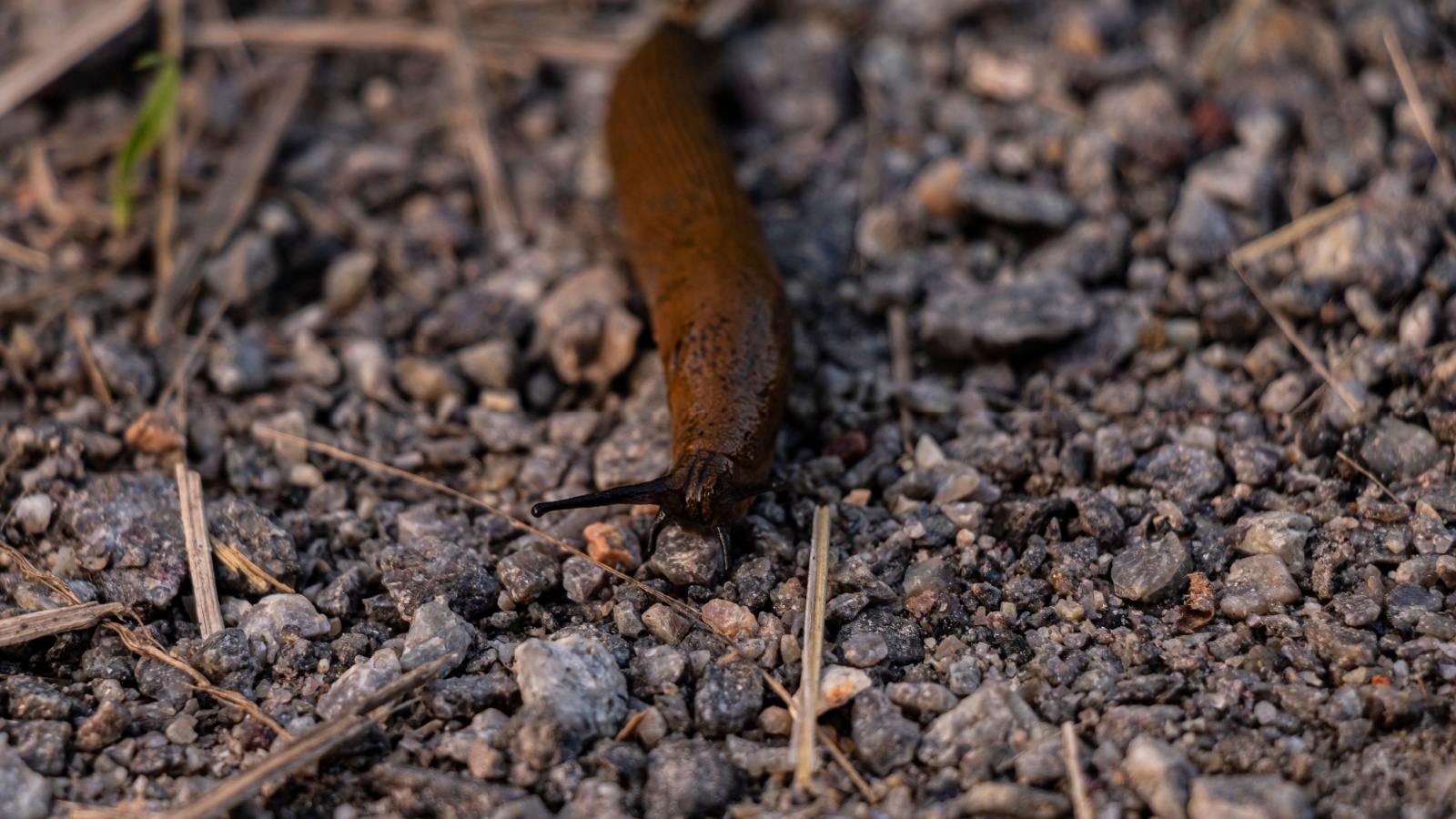Every gardener has been there—you carefully plant your seeds and bulbs, eagerly waiting for them to sprout, only to discover that something has nibbled them down to nothing. It’s frustrating, to say the least! While chemical sprays might seem like a quick fix, scientists at Frontiers share that they come with concerns about the environment, your health, and even the long-term health of your garden.
Luckily, nature has its own built-in pest control methods, and plenty of experienced gardeners (including experts at the Peace Corps) swear by them. From enlisting the help of friendly insects like ladybugs and lacewings to planting natural pest deterrents like marigolds and nasturtiums, there are plenty of ways to protect your garden, without a single drop of synthetic pesticide.
Ready to give it a try? Here are some simple, natural solutions to help keep your garden pest-free while staying kind to the environment.
1. Grow Basil

Image Credit: Shutterstock.
In my experience, herbs, fruits, and vegetables are easy to grow, and the results are far tastier than store-bought produce. Unfortunately, local bugs tend to agree, and they love to munch away at my plants.
In general, any herb with a strong scent can help keep pests at bay, but Science Direct says few can rival the strong aroma of basil. Aim to plant some in your herb garden, or around fruits and vegetables.
2. Garlic Spray

Image Credit: Shutterstock.
Garlic can certainly match basil in the aroma stakes, but the plant is trickier to grow. An alternative is to make a spray from the bulbs and use it around areas that have already been infected by pests.
Although making garlic spray is more complex than other options, experts at Epic Gardening swear by its effectiveness. Take two whole bulbs, blend them in a processor, and add vegetable oil, liquid soap, and enough water to fill a small jar. Spray directly onto infected plants for best results.
3. Damp Wood

Image Credit: Shutterstock.
Slugs and snails are a serious problem for home gardeners. They will eat their way through most plants and flowers, leaving devastation in their slow paths.
Many natural remedies are suggested, including beer, but one of the best ways I’ve found to guard your plants is to surround them with damp wood. Simply head out in the morning, clear the pests that are lurking underneath the timber, and repeat the process.
4. Other Slug Traps

Image Credit: Shutterstock.
The damp wood trick is perfect if you want to get rid of slugs and snails humanely. If you’re comfortable with a more permanent solution, beer, and yeast traps are the answer.
Either option is easy to make: Flowery Prose teaches that for the yeast trap, just blend a cup of water with a teaspoon of sugar and half a teaspoon of dry yeast. Mix it all together, and place it in a container that is level with your threatened plants. Slugs come out at night, so you should be able to head out in the morning and deal with the aftermath.
5. Soap Spray

Image Credit: Shutterstock.
I like to grow chili plants at home. They are fun to watch as they slowly develop flowers and fruit over the summer. The big issue is with whiteflies, which love the sap and can quickly cause an infestation.
A mild soap spray has provided some relief. I recommend using pne-and-a-half teaspoons mixed with a quart of water. The mix is also great for use against spider mites, aphids, and other insects.
6. Chili Pepper Spray

Image Credit: Bulgn / Shutterstock.com.
Whiteflies may love the sap from the chili plant, but other bugs detest it. Capsaicin is the chemical in question, and it is the ingredient that gives chilies their heat.
It can have many uses, and capsaicin is reported to be an effective pain reliever in humans. Used as a garden spray, it’s excellent for fighting caterpillars and other chewing bugs, such as the many beetles that can lay waste to your garden.
7. Grow Lavender

Image Credit: Shutterstock.
Lavender is arguably the most versatile plant you can grow. Its scent is used in herbal medicine where The Sleep Doctor says it can help to promote relaxation and sleep. Out in your yard, lavender will attract bees and other pollinators, while that strong aroma also deters nasty bugs.
Moths, mosquitoes, flies, and fleas are among the insects that hate the smell. It’s relatively easy to grow, so lavender could be your first defense in the fight against garden pests.
8. Nasturtiums

Image Credit: Shutterstock.
Herbs aren’t the only plants that can provide a natural barrier for pests. Nasturtiums make great companion plants that protect other plants in their vicinity from squash bugs, cabbage loopers, aphids, and beetles.
Plants on the ground, such as squash and cabbage, are especially hard to protect, so nasturtiums can be a good option. They also provide attractive petals in shades of red, yellow, cream, orange, and purple.
9. Catnip

Image Credit: Shutterstock.
The catnip plant has many qualities. It’s quick and easy to grow, and Gardening Knowhow shares that the strong scent is known to deter ants, aphids, squash bugs, cabbage loopers, and a host of hungry beetles.
It’s an invasive plant that spreads in clumps across your garden, but it’s quite attractive with white flowers that carry hints of violet.
If you do plant catnip, be prepared for visits from the local feline population. PetMD shares that cats love the chemicals released by the plant, so you must love kitties!
10. Tomato Leaf Spray

Image Credit: Shutterstock.
If you’ve ever grown tomatoes, you will be aware of the intense aroma their leaves give off. That scent can also serve as a homemade, organic insecticide.
It’s ironic because the tomato plant can be the hardest to protect, but this spray can really work. Chop up the leaves and leave them to infuse in water overnight. In the morning, strain the liquid and you have your natural spray.
11. Vinegar

Image Credit: Shutterstock.
The strong taste and smell of vinegar can help in your home and garden, but it only works with certain pests. It can be effective at controlling ants, mosquitoes, and spiders, and if you’re having problems with those bugs, mix in a 50/50 spray with water.
However, the pest experts at Orkin advise that there are some issues with vinegar as a pesticide. It can attract fruit flies, and it may also damage certain plants if not diluted enough, so remember to proceed with caution.
12. Cinnamon Spray

Image Credit: Shutterstock.
The use of infused sprays is a common theme on this list. Cinnamon is a logical option as it has a strong scent, but it’s really only useful for one type of pest.
Ants detest the smell of cinnamon so if they’re attacking your pots, it’s worth a try. Mix two teaspoons of powder with four cups of warm water and leave to steep overnight. I’ve had issues with ants and pet food, and cinnamon spray has proved a useful deterrent.
13. Plant Rosemary

Image Credit: Shutterstock.
We started with a herb, and that’s where we will finish. Like others on this list, rosemary has a strong scent that repels insects, while the leaves can also be used for their oil. In turn, you can make a bug-repellent spray, so it’s a double threat.
It’s also worth giving rosemary its own section as it’s so easy to grow. It’s a hardy plant, so you can harvest those leaves all year round and add a delicious twist to roast potatoes.


